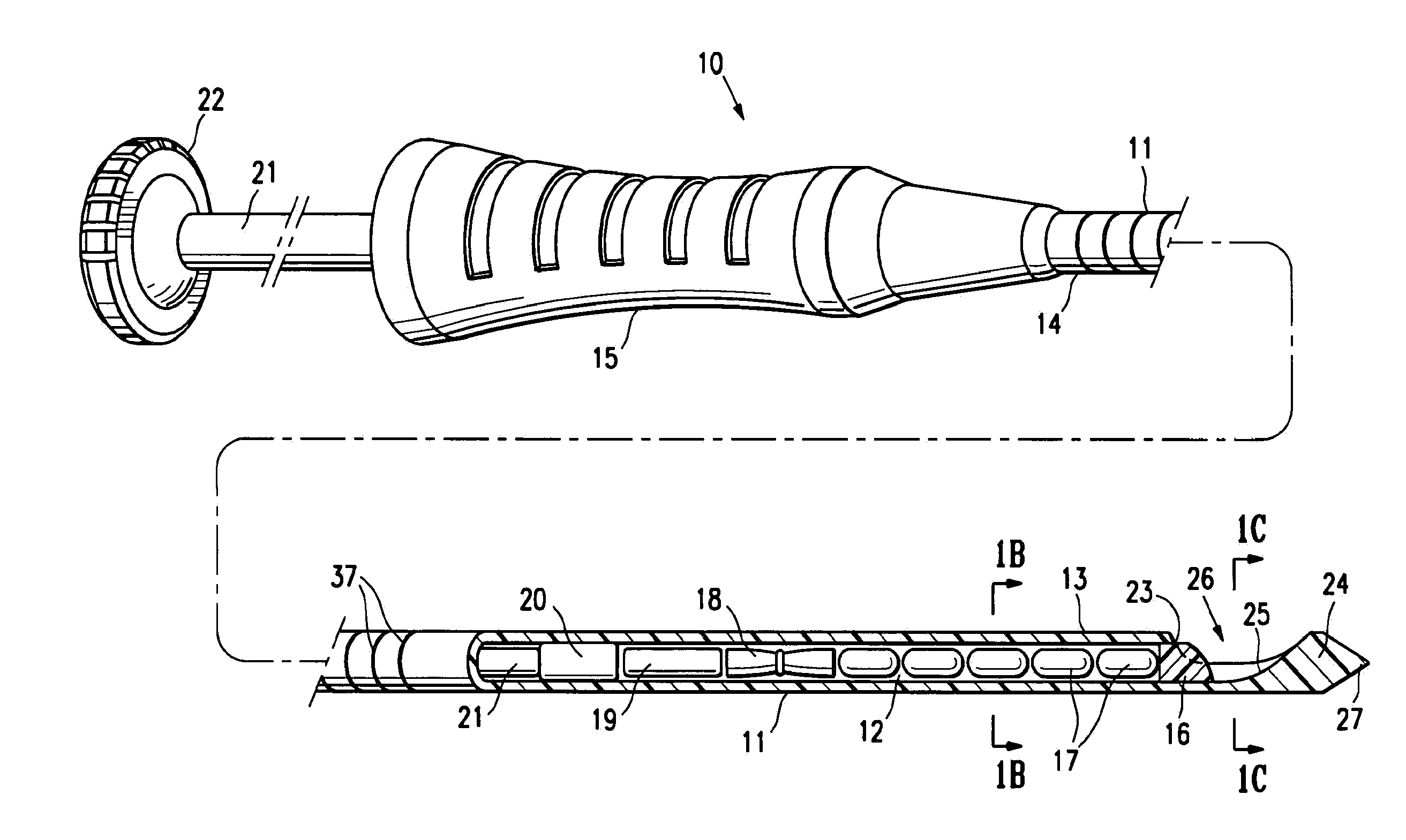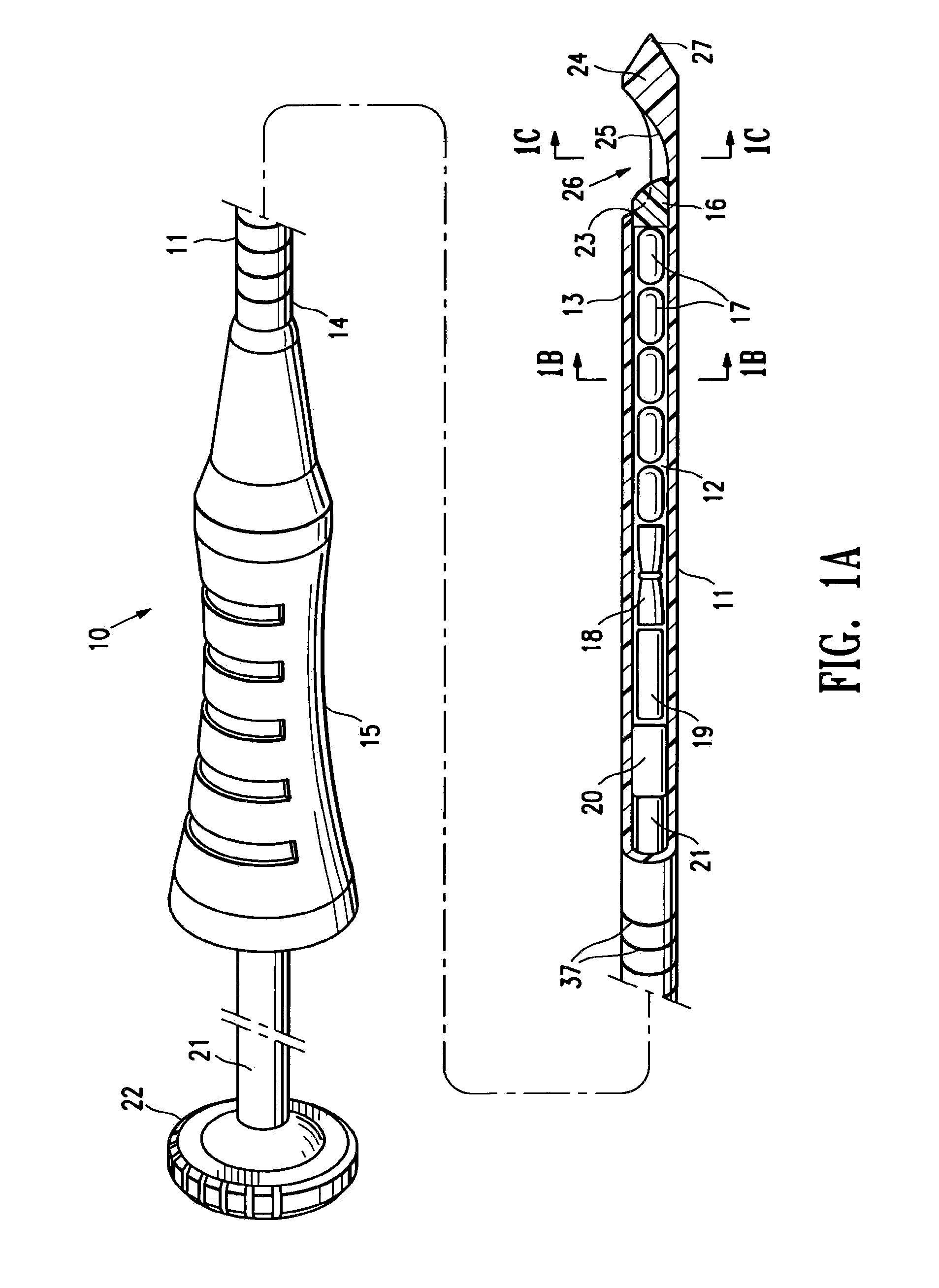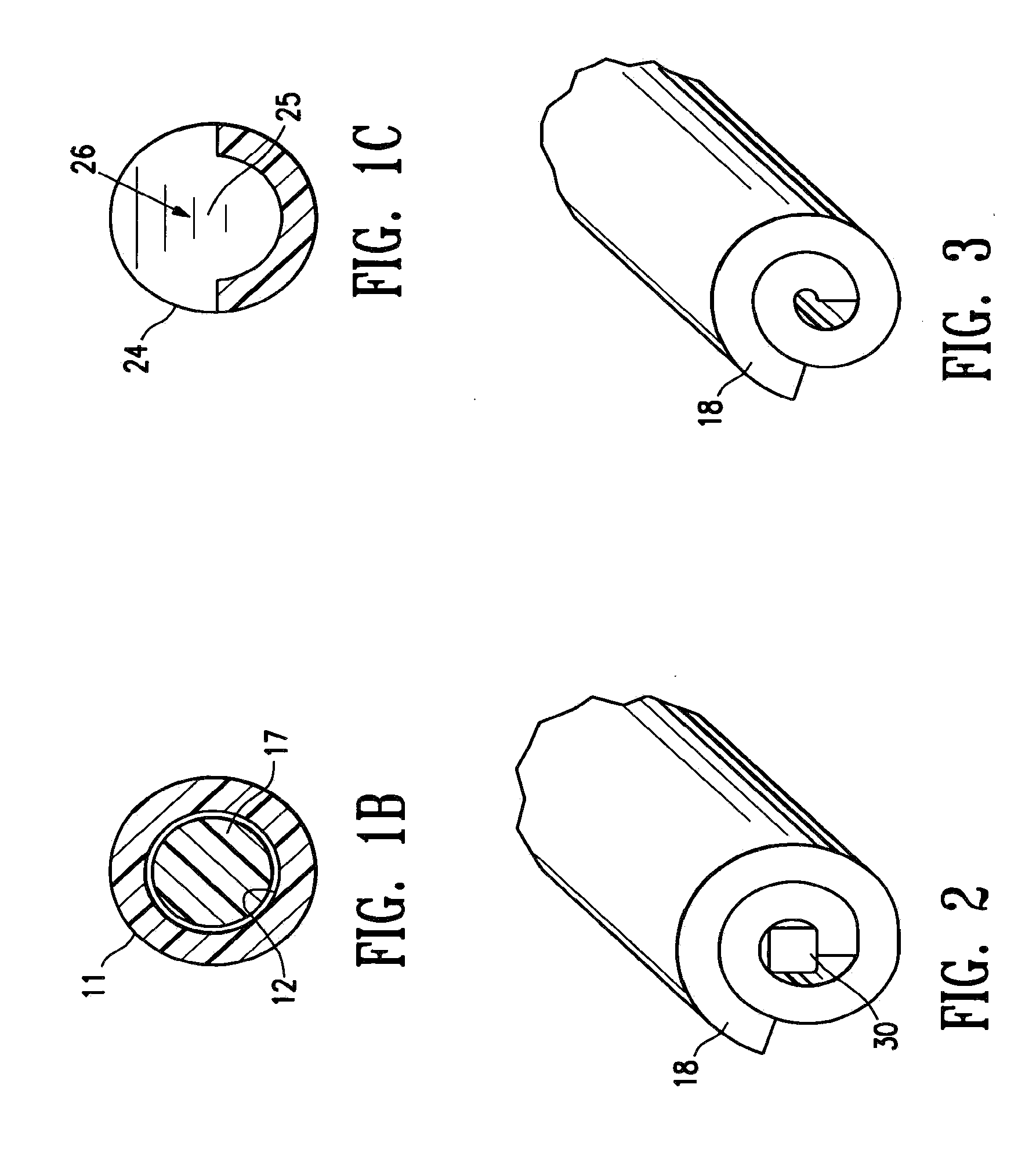Intracorporeal marker and marker delivery device
a technology of intracorporeal markers and delivery devices, which is applied in the field of intracorporeal markers and marker delivery devices, can solve the problems of misdirected follow-up treatments to an undesired portion of the patient's tissue, inability to heal or otherwise change, and inability to accurately detect the patient, etc., to achieve the effect of enhancing expansion, facilitating detection, and enhancing expansion
- Summary
- Abstract
- Description
- Claims
- Application Information
AI Technical Summary
Benefits of technology
Problems solved by technology
Method used
Image
Examples
Embodiment Construction
[0043]FIGS. 1A-1C illustrate a marker delivery device 10 embodying features of the invention which includes a delivery tube or cannula 11 with a bore 12, a distal portion 13, and a proximal portion 14 with a handle 15. A releasable distal plug 16, several (five) short term markers 17, a pair of fibrous markers 18 and 19 and a proximal plug 20 are shown disposed within the bore 12. A plunger 21 is slidably disposed within the tube bore 12, and is provided with a proximal end 22 configured to allow an operator to press the plunger further into the bore 12 and push the releasable plug 16 and one or more of the other markers out of the discharge port or opening 23 in the distal end 24 of delivery tube 11. Cannula handle 15 allows an operator to hold the cannula steady while pressing plunger 21 to discharge the releasable plug 16 and markers 17 and 18.
[0044]Releasable plug 16 may substantially fill the discharge opening 23, as shown in FIG. 1, or may occupy or block only a portion of the...
PUM
 Login to View More
Login to View More Abstract
Description
Claims
Application Information
 Login to View More
Login to View More - R&D
- Intellectual Property
- Life Sciences
- Materials
- Tech Scout
- Unparalleled Data Quality
- Higher Quality Content
- 60% Fewer Hallucinations
Browse by: Latest US Patents, China's latest patents, Technical Efficacy Thesaurus, Application Domain, Technology Topic, Popular Technical Reports.
© 2025 PatSnap. All rights reserved.Legal|Privacy policy|Modern Slavery Act Transparency Statement|Sitemap|About US| Contact US: help@patsnap.com



